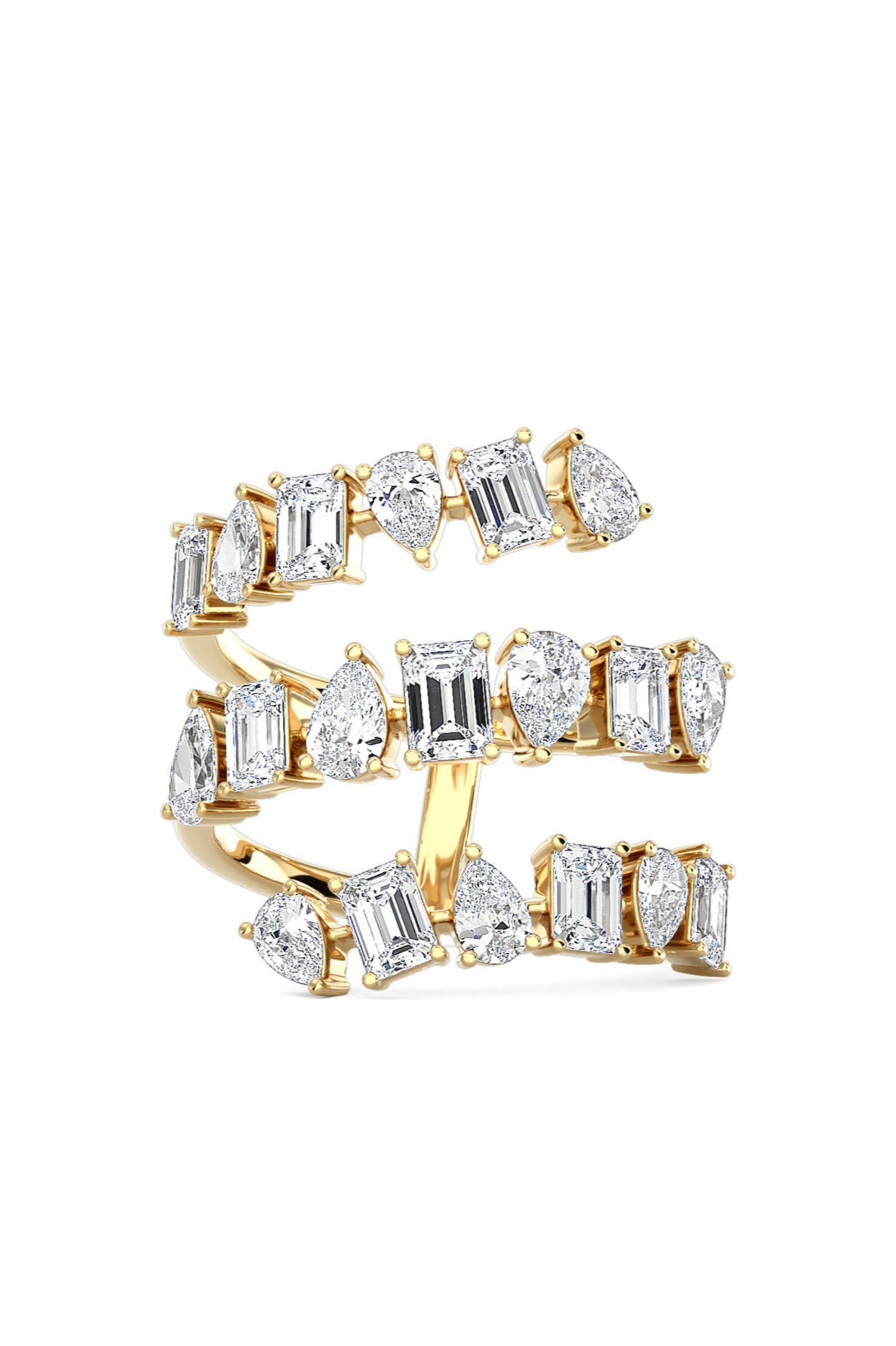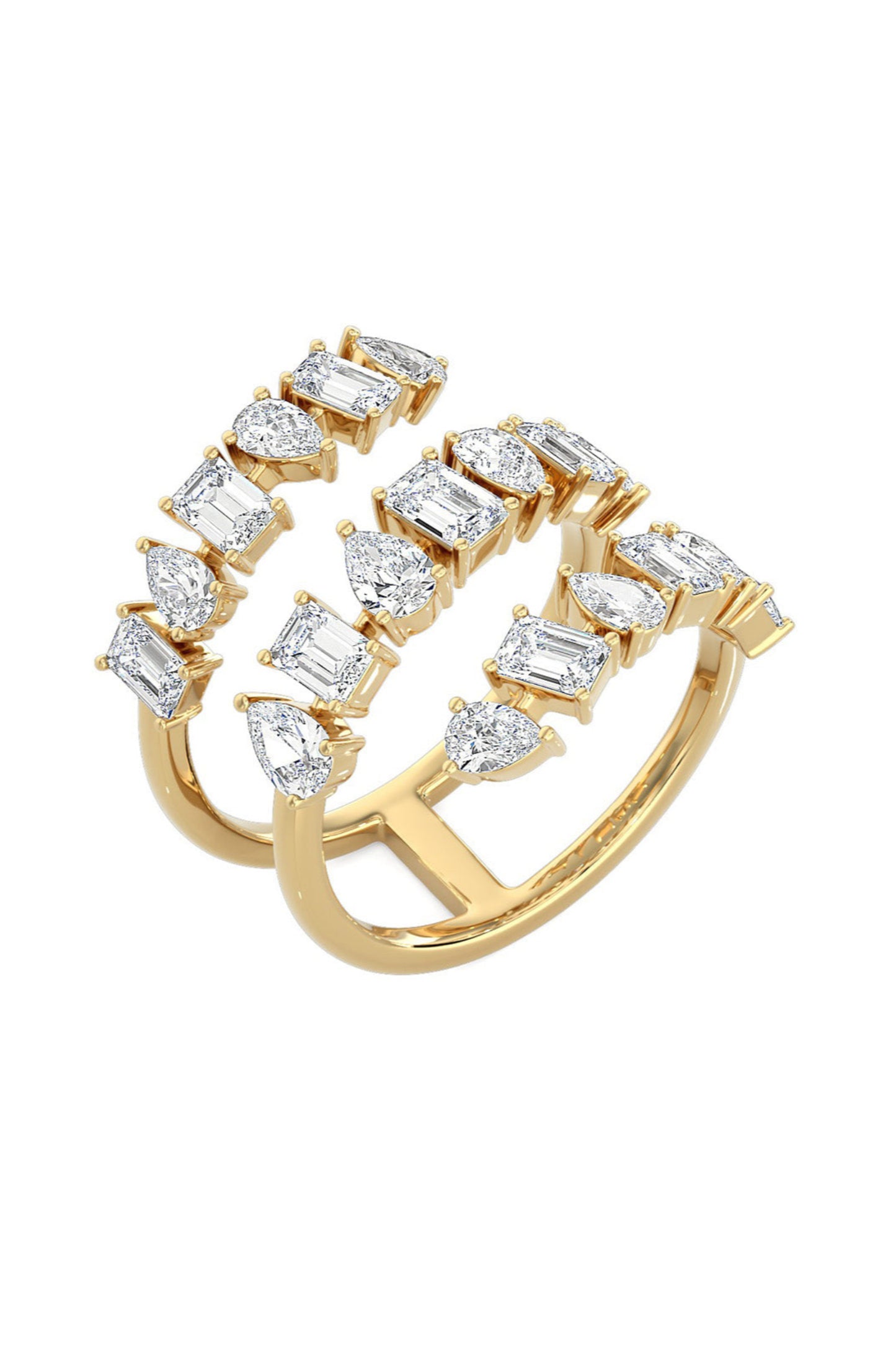Is a Lab-Grown Diamond Considered Fake? Debunking Common Myths
When it comes to buying diamonds, the options are numerous, but one question often arises: Are lab-grown diamonds considered fake? With the rise of lab-grown diamonds in recent years, many people are still unclear about their authenticity, value, and overall worth. There's been a lot of debate surrounding this topic, with some even confusing these diamonds with imitation diamonds or artificial stones like cubic zirconia.
In this blog, we’re here to set the record straight. Let’s explore what lab-grown diamonds really are, how they compare to natural diamonds, and why they are far from "fake."
What is a Lab-Grown Diamond?
A lab-grown diamond (also known as a man-made or synthetic diamond) is an authentic diamond that is created in a controlled laboratory environment using advanced technological processes. These diamonds have the same physical, chemical, and optical properties as natural diamonds—what sets them apart is the method of their creation.
There are two primary methods for creating lab-grown diamonds:
- High Pressure High Temperature (HPHT): This process mimics the natural conditions in which diamonds form beneath the Earth’s surface by using intense pressure and heat to grow the diamond from carbon.
- Chemical Vapor Deposition (CVD): In this method, a carbon-rich gas is used to deposit carbon atoms onto a substrate, which eventually forms a diamond crystal.
While the process is synthetic, the diamond itself is genuine, containing the same crystal structure and chemical makeup as a diamond that’s mined from the Earth.
Are Lab-Grown Diamonds Fake?
The short answer is no—lab-grown diamonds are not fake. They are real diamonds. The confusion often comes from the misconception that lab-grown diamonds are "imitation diamonds" or inferior to natural ones.
Here’s why lab-grown diamonds should not be considered fake:
1. Same Composition as Natural Diamonds
A lab-grown diamond is made from the same material as a natural diamond: carbon atoms arranged in a crystalline structure. Both lab-grown and natural diamonds share the same hardness (10 on the Mohs scale), brilliance, and fire. They are composed of pure carbon, making them chemically identical. The only difference is their origin—lab-grown diamonds are created in a laboratory, while natural diamonds are formed deep within the Earth over millions of years.
2. Identical in Appearance
Lab-grown diamonds are indistinguishable from natural diamonds to the naked eye. Both diamonds have the same sparkle, cut, clarity, and colour. Whether it’s a round brilliant, princess cut, or any other shape, a lab-grown diamond looks just like a natural one when viewed under normal conditions.
Advanced gemmological equipment, such as a microscope or spectrometer, is required to distinguish between the two. However, even in laboratory tests, many lab-grown diamonds are so similar to natural diamonds that they can only be identified by an expert. This proves that lab-grown diamonds are not "fake," but instead represent a different creation process that results in a real, high-quality diamond.
3. Accredited and Certified
Just like natural diamonds, lab-grown diamonds are graded according to the same standards—the Four Cs: Cut, Color, Clarity, and Carat weight. They can also be certified by recognized gemmological organizations such as the Gemmological Institute of America (GIA) and the International Gemmological Institute (IGI). These certifications confirm the quality and authenticity of the diamond, ensuring it meets the same standards as natural diamonds.
While lab-grown diamonds are often certified as “lab-created” or “synthetic” to distinguish them from natural diamonds, this does not imply that they are any less authentic or valuable.
4. Ethical and Environmental Benefits
One key reason many people choose lab-grown diamonds is their ethical and environmental advantages. Traditional diamond mining can be harmful to the environment and is often associated with unethical labour practices. In contrast, lab-grown diamonds are created in a controlled environment with minimal environmental impact. They are free from the controversies often linked to "blood diamonds" or "conflict diamonds."
By choosing a lab-grown diamond, consumers are supporting a more sustainable and ethical alternative to mined diamonds, which is far from the concept of something "fake" or inferior.
Are Lab-Grown Diamonds Less Valuable?
While lab-grown diamonds are typically priced lower than their natural counterparts, this doesn't make them any less valuable. The value of a diamond is determined by its quality—whether it's grown in a lab or mined from the Earth. Lab-grown diamonds are often more affordable because they are produced in a controlled environment, without the costs associated with mining, transportation, and distribution of natural diamonds.
Many people choose lab-grown diamonds because they offer a way to get a high-quality, ethical, and beautiful diamond at a more accessible price point. This doesn’t diminish their value in any way, and lab-grown diamonds continue to be highly sought after for engagements, weddings, and special occasions.
Why Are Lab-Grown Diamonds Becoming So Popular?
Lab-grown diamonds have gained significant popularity for several reasons:
1. Affordable Luxury
Lab-grown diamonds offer the same beauty and durability as natural diamonds but at a more affordable price. This allows people to get a larger, higher-quality diamond for their budget.
2. Ethical and Sustainable
Many consumers prefer lab-grown diamonds because they are a more ethical choice. They eliminate concerns about the environmental and human rights issues associated with traditional diamond mining.
3. Transparency and Traceability
With lab-grown diamonds, you can often trace the entire creation process, ensuring that the diamond was produced responsibly and ethically. This transparency is not always possible with mined diamonds.
4. Innovation and Technology
Lab-grown diamonds are a product of technological innovation, appealing to consumers who value cutting-edge advancements. The process of creating diamonds in a lab represents a significant achievement in science and engineering.
Conclusion: Lab-Grown Diamonds Are the Real Deal
So, to answer the question: No, lab-grown diamonds are not fake. They are real diamonds that have the same physical and chemical properties as their natural counterparts. The only difference is their origin. Lab-grown diamonds are an excellent choice for those seeking a more sustainable, ethical, and affordable option without sacrificing quality or beauty.
Whether you're in the market for an engagement ring, a gift for a special occasion, or simply want to treat yourself, lab-grown diamonds offer a fantastic option that blends luxury, innovation, and responsibility.








